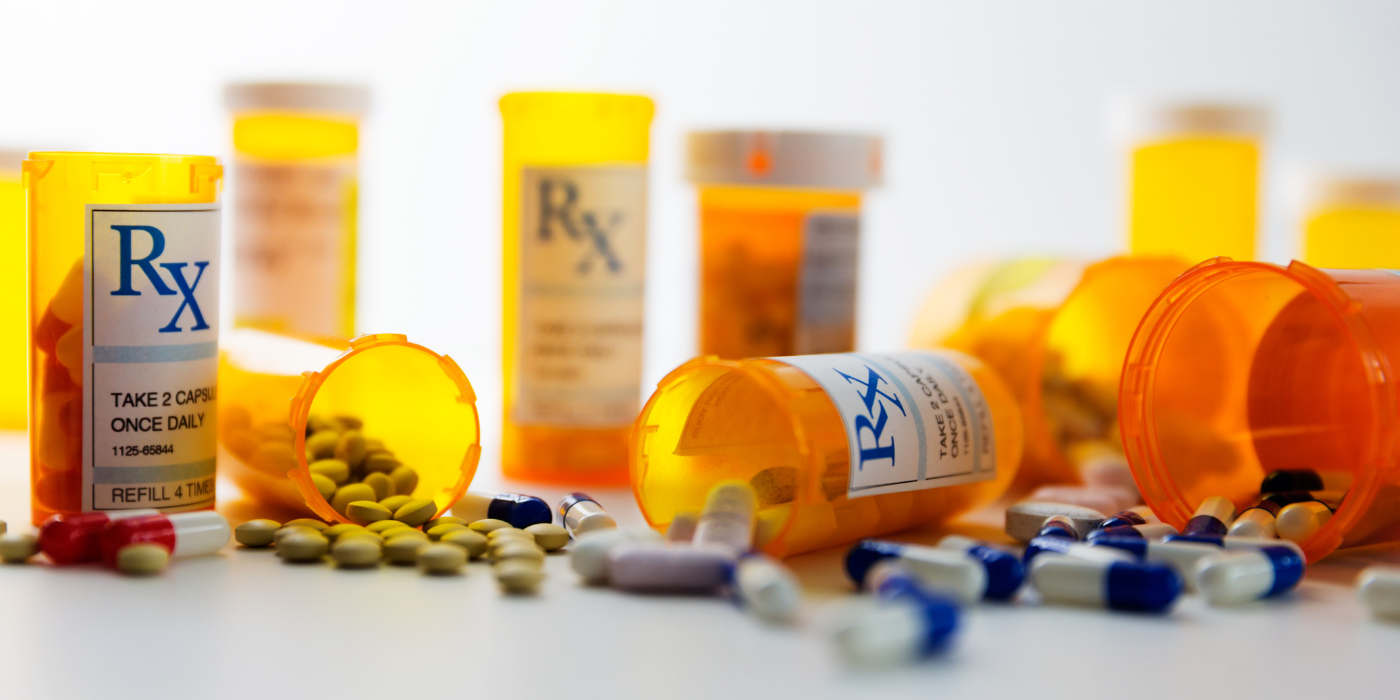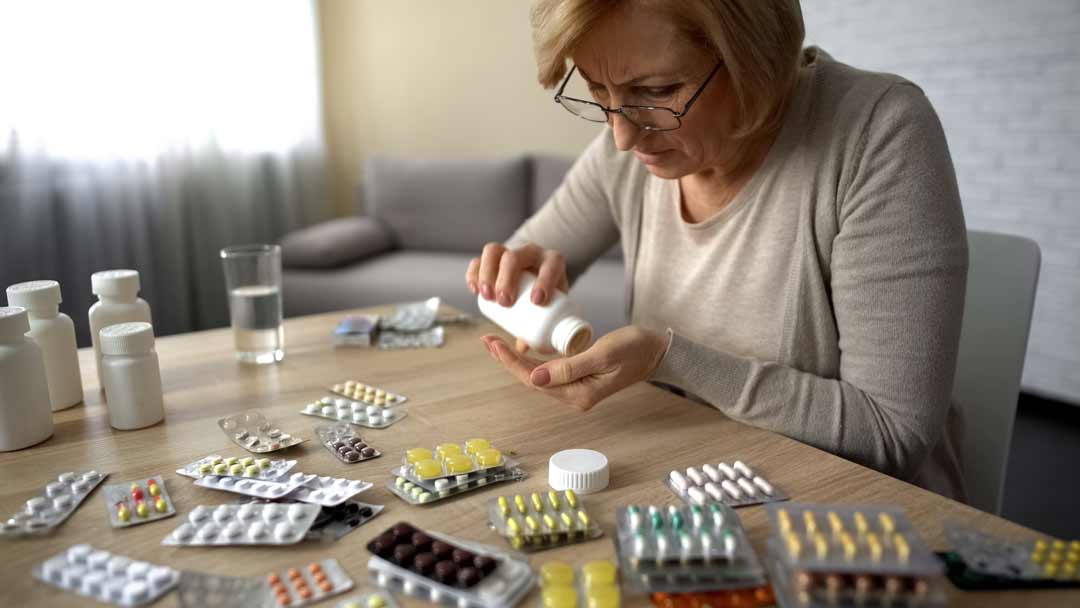
Imagine a full week of anxiety, cold chills, intense sweating, restlessness, nausea, vomiting, diarrhea, and restlessness. Your body experiences aches and pains all over, and your inability to sleep provides little to no relief for combatting these excruciating symptoms. This might sound like a serious bout with the flu or some other virus, but unfortunately, it’s something far more sinister. You just read a description of opiate detox and the grim reality individuals face when they attempt to abstain from their opiate of choice.
Many people chime in with comments such as, “well, it’s only a week of flu-like symptoms; what’s so bad about it?” The challenge becomes even greater when you combine these intense symptoms with the mental anguish of knowing a solution to your pain is a phone call away.
One trip to score a dose of heroin or a specific pill can make all these detox side effects go away for an addict. This is possibly the most challenging element of going through opiate detox.
Opiate detox centers are crucial in providing options for medically assisted detox for individuals with opiate dependence. However, before one can understand the importance of these centers, one must first have a firm grip on what opiate dependence is. What is opiate dependence, and how does an individual arrive at this situation?
What Is Opiate Dependence?
Opiate dependence is when a user of opiates develops a physical need for their drug of choice. These drugs include heroin, oxycodone, morphine, and many other substances.
Not every user becomes dependent on opiates through an addiction to an illegal narcotic. Many individuals with prescriptions for pain relievers don’t even abuse their medication.
However, after a significant period of daily use, the person’s body begins to tolerate the opiate they’re ingesting. Eventually, the user needs higher doses to maintain their high or pain relief. This eventually segues into needing the substance solely to function daily.
Once a user enters the throes of opiate dependence, receiving their daily dose is vital to avoid detox and withdrawal symptoms. In the first section, the symptoms of opiate withdrawal were highlighted. What causes opiate withdrawals in a user after dependence takes hold?
What Causes Opiate Withdrawals?
Opiates are a strong substance, and once they incorporate into a user’s daily life, they change the chemical makeup of the user’s brain. When users ingest opiates, the chemicals contained in the drug bind to certain receptors and neurons of the user.
Over time, the body gets used to the attachment of these chemicals, as they cause dopamine releases and other “feel good” properties in the body. Eventually, the body no longer produces these chemicals on its own, and the substance must remain in the user’s body at all times.
If an individual with opiate abuse disorder suddenly stops taking opiates, the chemicals are no longer bound to the receptors in the brain. This abrupt change causes the body to react, and the ensuing response comes in the form of withdrawal symptoms.
Users who ingest opioids will also experience withdrawal. Opiates and opioids cause the same effects and lead to the same scenario in the end, but there’s one significant difference.
Opiates get processed in a natural form from a plant state. The opium plant produces substances like heroin, morphine, oxycodone, and other strong opiates.
Opioids, on the other hand, are synthetic and completely lab-made. Common opioids include methadone, fentanyl, carfentanil, and other deadly substances.
Because opioids are lab-made, typically, this means they are much stronger and deadlier. In a controlled environment, it’s much easier to dictate the potency and strength of substances, and opioids normally intend to be highly effective and long-lasting.
When individuals decide to quit, it’s important to have access to opiate detox centers. Without the ability to enter this form of treatment, a user’s chances of success decrease significantly. What are opiate detox centers, and how do they help addicts succeed?
What Are Opiate Detox Centers?
Opiate detox centers are medical establishments that assist users through the detox and withdrawal process. Trained medical professionals are available 24/7, monitoring patients while going through the toughest physical side effects of detox.
Many benefits exist in choosing an opiate detox center. Besides access to certified medical personnel, patients also receive medication and other therapy options to ease the severity of withdrawal symptoms.
The opiate detox process and opiate or opioid withdrawal symptoms normally cause addicts with recovery hopes to fail. Typically, the symptoms become too intense to bear alone, and users relapse to avoid these symptoms.
It’s much easier to empathize with an individual in recovery by briefly putting yourself in their shoes. The following section outlines the opiate detox process.
The Opiate Detox Process
The opiate detox process entails several different stages for users who enter. Initially, users undergo an intake process, allowing physicians and nurses to obtain vital information regarding the user’s habits.
Professionals use the opiate withdrawal scale to establish physical dependence on opiates. This scale helps doctors understand where a patient falls in terms of withdrawal severity.
Individuals with opiate abuse disorder answer several questions regarding physical condition, and scores are applied, typically on a scale of 1-5. In the end, the sum of all scores produces the opiate withdrawal score. The higher the score, the more intense the user’s withdrawal symptoms.
Opiate Withdrawal Symptoms
Depending on the stage of withdrawal, users will experience various symptoms. These symptoms include, but are not limited to the following:
- Yawning
- Watery eyes
- Sweating
- Goosebumps
- Cold chills
- Body aches
- Muscle and joint paint
- Nausea/stomach cramps
- Insomnia
- Restlessness
- Vomiting/diarrhea
- Anxiety
- Increased heart rate
- Depression
- Feelings of skin-crawling
Users may experience what is known as opiate anhedonia. Anhedonia is the inability to feel pleasure or happiness. Because of the way opiates and opioids rewire the brain and wreak havoc on chemical balances, anhedonia is not an uncommon side-effect.
However, regardless of how intense opiate withdrawal symptoms become, they are not permanent. The following is a sample opiate withdrawal timeline.
A Sample Opiate Withdrawal Timeline
Users detoxing from opiates typically begin to feel symptoms within 12-24 hours of the last ingestion period. However, certain opioids such as methadone may take as long as 36 hours to begin a detox, depending on the length of time used.
- 12-24 Hours: The initial feelings of withdrawal begin to take hold. Users may experience watery eyes, frequent yawning, irritability, and fatigue.
- Days 2-4: This is often the most intense withdrawal period for most users. During this time, users experience nausea, anxiety, increased heart rate, vomiting, diarrhea, intense sweating, insomnia, and restlessness. It’s important to remain hydrated during this period because of the rapid loss of fluids.
- Days 5-10: Around days 5 and 6, users will begin to feel relief from the most intense symptoms. The chills and fluctuation in body temperature begin to subside, as well as nausea and stomach issues. However, users may still feel periods of body aches and insomnia. Restless legs are a large factor behind the lack of sleep.
Opiate detox centers are lifesavers during these withdrawal periods. Quitting cold turkey is strongly discouraged for anyone looking to get clean. The following section outlines the dangers of cold turkey opiate detox.
Dangers of Cold Turkey Opiate Detox
The dangers of cold turkey opiate detox present a wide variety of results. Individuals that don’t seek medical detox for opiates significantly lower their chances of successful detox. Left on their own without a monitored, structured setting, most users end up relapsing to find relief.
Another one of the dangers of cold turkey opiate detox is the risk of dangerous medical side effects. Although opiate withdrawal isn’t fatal, certain situations that manifest can be detrimental to a user’s health. The following list includes the biggest risks involved with the dangers of cold turkey opiate detox:
- Dehydration
- High blood pressure
- Increased heart rate
- Anxiety/panic attack
- Complications related to lack of sleep
Finding relief through medical detox for opiates will not only keep users more comfortable but lower their risk of these dangers. Chances of successfully completing detox are also much higher.
Medical Detox for Opiates
Medical detox for opiates is available at many treatment centers and medical facilities throughout the country. These detox facilities are staffed by trained professionals 24/7 that can monitor individuals during the detox period.
There are several benefits of enrolling in an opiate detox center. Consider the following pros of taking advantage of these services.
Benefits of Enrolling In An Opiate Detox Center
Individuals with opiate abuse disorder dealing with the withdrawal symptoms will benefit from medically assisted detox characteristics.
- Doctors and nurses monitor patients on a constant basis during a medical detox for opiates. Typically, patients receive access to equipment that monitors vitals such as heart rate and blood pressure. This equipment allows medical staff to ensure the individual remains stable and counteract any negative physical symptoms accompanying withdrawal.
- Medications are administered that bring relief from withdrawal symptoms. There is usually no concrete list of potential prescriptions or OTC medications, as each patient is assessed on an individual basis. However, patients receive some of the following medications:
- Medication for anxiety such as Klonopin or Valium may be dispensed. This may also relieve feelings of depression and nervousness associated with withdrawal. These prescriptions also serve to lower shakiness and feelings of restlessness.
- Anti-nausea medication is often prescribed to alleviate stomach issues associated with detox. OTC medicines like Immodium are also commonly prescribed to prevent diarrhea and lower the risk of dehydration.
- Patients who experience muscle aches or other pain are sometimes prescribed muscle relaxers. Ibuprofen also brings relief during the withdrawal period. However, it’s important to note that no strong pain-relieving medications containing opiates or opioids are prescribed.
- Some patients will also benefit from certain antidepressants. These help with the lack of positivity until the body can return to normal dopamine production.
Patients also receive access to specialized diets that cater to detox. This includes drinks such as Gatorade or other products to reduce dehydration. Nutrient-rich diets are an option since anyone in detox needs to regain their strength. During the initial phases, patients may only be able to keep down items such as soup or broth, which are typically available in detox.
After detox, patients can normally transfer to an inpatient rehabilitation facility. This is important for long term opiate recovery and continuing treatment.
Long Term Opiate Recovery
After finishing their time at an opiate detox center, it’s recommended that patients transfer to some form of inpatient rehab or live-in facility. This is important for success and long-term opiate recovery.
At inpatient rehab facilities, addicts will receive education regarding opiate addiction and ways to manage after rehab. This is done through one-on-one meetings with counselors and via group therapy sessions.
Individuals learn to cope and prepare for post-acute withdrawal symptoms, which sometimes plague users for up to 6 months after detox. Post-acute withdrawal symptoms are the sudden return of many withdrawal symptoms, such as chills, goosebumps, and insomnia.
Although these symptoms are typically short-lived, it’s important to understand how to manage them to avoid relapse. Doctors and counselors work with patients on ways to cope with these and other challenging issues during the post-treatment phase.
Additionally, patients will also have access to a substance known as Vivitrol. Vivitrol is a shot administered that lowers cravings and blocks the effects of opiates and opioids. These shots also prevent the symptoms of post-acute withdrawal.
Normally patients must return to their primary care to receive this shot monthly. However, chances of long-term opiate recovery seem to be much higher through the use of Vivitrol.
The last question most people have concerns selecting a detox facility. In the last section, you’ll find information on choosing an opiate detox center.
Choosing an Opiate Detox Center
It’s important to do thorough research on opiate detox centers to find the most suitable option. One of the most crucial elements is making sure the organization has the proper certifications and knowledge to treat opiate withdrawal.
First, try to obtain feedback from past users or read reviews online, at Circle of Hope we’re very proud of our reviews and our services. These can be very telling but still don’t always provide enough information to decide. If you’re still in doubt, ask our team if touring the location is possible and ask for a rundown of the treatment options available for your specific concerns.
It’s important to obtain all the pertinent information about any opiate detox center. By choosing the most efficient and appropriate location, a user’s chances of long term opiate recovery are much higher.
If you or someone you know suffers from opiate abuse disorder, Circle of Hope Treatment Center can provide treatment to assist in recovery. Our journey has allowed us to assist many individuals in finding their way out of the throes of substance abuse disorder and onto a path of recovery. When you’re ready to take that important step, contact one of our Admissions Specialists to get started.

